Accepted Scientific Name: Echinocactus polycephalus Engelm. & J.M.Bigelow
Proc. Amer. Acad. Arts 3: 276. 1856

Emorycactus polycephalus (Echinocactus polycephalus) Photo by: Raimondo Paladini
Growing habit, Nayarit, Sonora, Mexico. An old multi-headed specimen.
Origin and Habitat: USA (Mohave and Sonoran desert: Yuma and Mojave Co., Arizona, Inyo, San Bernardino Valley, Riverside and Imperial Co., California, Lincoln and Clark Co., Nevada), and Mexico (northwestern Sonora)
Altitude: It occurs at low elevations in the Mojave and Sonoran Deserts from 30 to 750 metres above sea level.
Habitat: It grows in rocky hills, slopes, ledges and gravelly flats of canyons both on igneous and calcareous substrates and occasionally in clayey soils of valley bottoms. It is restricted to the driest parts of desert where rarely rainfall exceeds 130 mm per annum. In the Sonoran Desert region Echinocactus polycephalusSN|940]]SN|940]] receives biseasonal rainfall over most of its range. Because of the prevailing high summer temperatures, soil moisture should be more available in winter than summer, but in the northern part of the range, where frost occurs regularly, cold undoubtedly limits the usefulness of winter soil moisture.
Synonyms:
See all synonyms of Echinocactus polycephalus
Common Names include:
ENGLISH: Woolly-headed Barrel Cactus, Many-headed Barrel Cactus, Harem Cactus, Cotton Top Cactus, Turk's Head
SPANISH (Español): Biznaga Chilitos
Description: Echinocactus polycephalus is a densely spiny cactus, solitary when young but almost always branching from the base in age and forming spreading clumps of 20-30 heads ( sometimes of more than 100 stems). The clumps are usually about 60 cm tall and up to 120 cm across.
Derivation of specific name: Polycephaly is the condition of having more than one head. The term is derived from the Greek stems poly (Greek: "πολύ") meaning "many" and kephalē (Greek: "κεφάλη") meaning "head".
Stems: Globular to short cylindrical, 10-12 cm in diameter, sometimes as much as 70 cm high but usually smaller (30-60 cm).
Ribs 13 to 21, rather stout, narrow and acute, 2 to 3 cm. high, some-what undulate, nearly hidden under the dense spine armament.
Areoles: Large, 10 to 12 mm in diameter, 1 to 3,5 cm. apart.
Spines: Dense, obscuring the stems, 7 to 15 per areole, subulate, more or less flattened, strongly cross-striated, when young covered with a downy felt but afterwards glabrate, yellow, pale grey tinged with red, or pink or light purplish after the felt peels off,.
Central spines: 4 spreading, 6-7,5 cm long, lowest one curving slightly downward, others more or less straight and flattened.
Radial spines: 6 to 8, shorter 2,5 to 5 cm long spreading irregularly, similar to centrals.
Flowers: Produced at the stems apex, yellow with pink midribs, 5 to 6 cm. long and in diameter; scales on the ovary minute, hidden under the mass of long wool borne in their axils; scales on the flower-tube numerous, only a little longer than the wool, chartaceous, pungent; inner perianth-segments linear-oblong, 2,5 to 3 cm long, entire, obtuse; style slender.
Blooming season: Summer (In its native habitat habitat bloom in July) and seeds mature about a month later.
Fruit: Globose to oblong, 1,5 to 2,5 cm long, heavily covered with white hairs, crowned by the somewhat spinescent scales, The fruit dries slowly at maturity and may persist on the plant for several months and dehisce by a basal pore through which the seeds pass easily.
Seeds: Angled, papillose, dull black, 3 to 4 mm, long; hilurn large, lateral but below the middle of the seed; embryo curved, the cotyledons buried in the large albumen.
Chromosome number: 2n = 22
Remarks: The juvenile Echinocactus looks quite different from the mature specimens. In fact, as with other Echinocactus and Ferocactus seedlings, the rib structure is not yet apparent, and they have pronounced tubercles making them look superficially like Mammillarias. This Echinocactus is unique because it branches under normal conditions. The dense, stout spines obscure the plant bodies and restrict the small yellow flowers from opening fully. The brown spines appear bright red when wet from rain.
Notes: Echinocereus polycephalus complex: This complex is formed by three similar barrel cacti and comprises Echinocactus parryi, Echinocactus polycephalusSN|940]]SN|940]] (var. polycephalus), and Echinocactus polycephalusSN|940]]SN|940]] ssp. xeranthemoides. The two varieties of E. polycephalus are indeed not recognized and accepted by all taxomists, in fact studies in the in the field, and distribution maps indicate potential sympatry among them. While herbarium studies, field observations, scanning electron microscopy, and genetic analysis support the distinction of E. parryi and E. polycephalus as separate species. ***Echinocereus polycephalus can be easily distinguished from Echinocactus horizanthalonius by its denser, stouter spines, multiple sterns, and clump forming habit.
Bibliography: Major references and further lectures
1) Edward Anderson “The Cactus family” Timber Press, Incorporated, 2001
2) James Cullen, Sabina G. Knees, H. Suzanne Cubey "The European Garden Flora Flowering Plants: A Manual for the Identification of Plants Cultivated in Europe, Both Out-of-Doors and Under Glass" Cambridge University Press, 11/Aug/2011
3) David R Hunt; Nigel P Taylor; Graham Charles; International Cactaceae Systematics Group. "The New Cactus Lexicon" dh books, 2006
4) N. L. Britton, J. N. Rose “The Cactaceae. Descriptions and Illustrations of Plants of the Cactus Family.” Volume 4, The Carnegie Institution of Washington, Washington 1923
5) Curt Backeberg “Die Cactaceae: Handbuch der Kakteenkunde” Gustav Fischer Verlag, Stuttgart New York 1982–1985
6) Thomas Henry Kearney, Robert Hibbs Peebles “Flowering plants and ferns of Arizona” U.S. Dept. of Agriculture, 1942
7) Lyman David Benson, Andrew Alexander Nichol “The cacti of Arizona” 1-5 University of Arizona, 1940
8) University of Arizona “Biological science bulletin” 5: The University, 1940
9) Raymond M. Turner, Janice E. Bowers, Tony L. Burgess “Sonoran Desert plants: an ecological atlas” University of Arizona Press, 2005
10) John Borg “Cacti: a gardener's handbook for their identification and cultivation” Blandford P., 1970
11) United States National Herbarium “Contributions from the United States National Herbarium” BiblioBazaar, 2010
12) Wikipedia contributors. “Polycephaly.” Wikipedia, The Free Encyclopedia. Wikipedia, The Free Encyclopedia, 30 Nov. 2017. Web. 10 Dec. 2017.
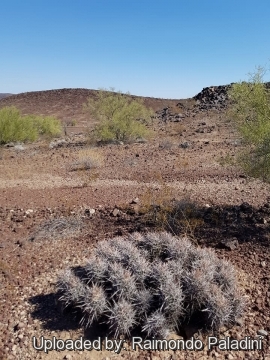 Echinocactus polycephalus ssp polycephalus, Nayarit, Sonora, Mexico. (Echinocactus polycephalus) Photo by: Raimondo Paladini
Echinocactus polycephalus ssp polycephalus, Nayarit, Sonora, Mexico. (Echinocactus polycephalus) Photo by: Raimondo Paladini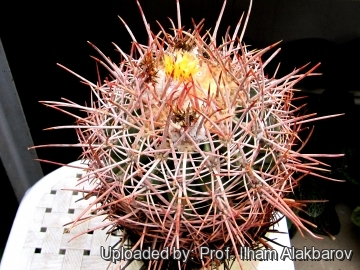 Emorycactus polycephalus (Echinocactus polycephalus) Photo by: Prof. Ilham Alakbarov
Emorycactus polycephalus (Echinocactus polycephalus) Photo by: Prof. Ilham Alakbarov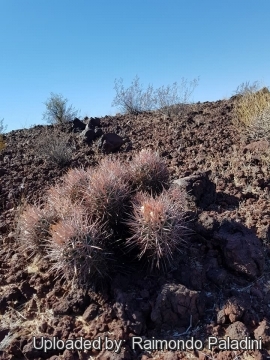 Echinocactus polycephalus ssp polycephalus, Juvenile specimen, Nayarit, Sonora, Mexico (Echinocactus polycephalus) Photo by: Raimondo Paladini
Echinocactus polycephalus ssp polycephalus, Juvenile specimen, Nayarit, Sonora, Mexico (Echinocactus polycephalus) Photo by: Raimondo Paladini Emorycactus polycephalus (Echinocactus polycephalus) Photo by: Cactus Art
Emorycactus polycephalus (Echinocactus polycephalus) Photo by: Cactus Art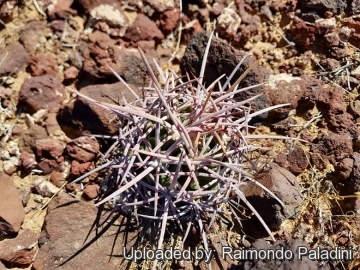 Echinocactus polycephalus ssp polycephalus, Juvenile specimen, Nayarit, Sonora, Mexico (Echinocactus polycephalus) Photo by: Raimondo Paladini
Echinocactus polycephalus ssp polycephalus, Juvenile specimen, Nayarit, Sonora, Mexico (Echinocactus polycephalus) Photo by: Raimondo Paladini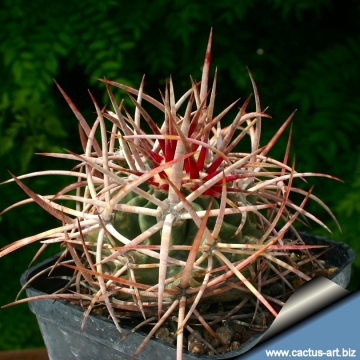 Echinocactus polycephalus, new growing spines. (Echinocactus polycephalus) Photo by: Cactus Art
Echinocactus polycephalus, new growing spines. (Echinocactus polycephalus) Photo by: Cactus Art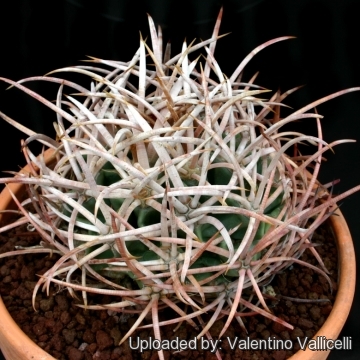 Emorycactus polycephalus (Echinocactus polycephalus) Photo by: Valentino Vallicelli
Emorycactus polycephalus (Echinocactus polycephalus) Photo by: Valentino Vallicelli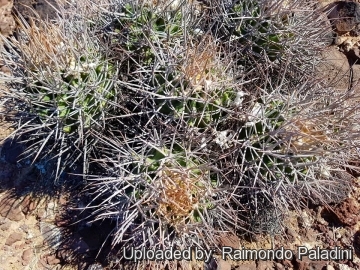 Echinocactus polycephalus ssp polycephalus, Juvenile specimen, Nayarit, Sonora, Mexico. (Echinocactus polycephalus) Photo by: Raimondo Paladini
Echinocactus polycephalus ssp polycephalus, Juvenile specimen, Nayarit, Sonora, Mexico. (Echinocactus polycephalus) Photo by: Raimondo PaladiniCultivation and Propagation: Echinocactus parryi is a summer grower species that is relatively difficult to grow on its own roots as its roots are particularly rot sensitive in cultivation, especially after planting. It is extremely xerophytic and adapted to very dry soils, but plant grafted are easy to grow and no special skill is required.
Growth rate: Slow-growing and very long-lived. It will make clumps given the best conditions. Plants grown from seed begin to branch at nearly 20 years of age.This cactus continues to be, a particular prize among collectors.
Soils: It likes very porous mineral cactus mix soil, but can become too elongated if compost is too rich.
Repotting: This plant needs plenty of space for its roots, repotting should be done every other year or when the it has outgrown its pot. Use pot with good drainage.
Watering: Needs moderate in summer, but do not overwater (Rot prone), keep dry in winter at a minimum temperature of 0°C.
Fertilization: Feed with a high potassium fertilizer in summer.
Hardiness: Reputedly resistant to frost if kept on the dry side prior to, and during, cold weather (hardy to -12 C ° C, or less for short periods), but for safe cultivation it is best to avoid freezing temperatures. It need a very good ventilation.
Exposition: The plant tolerates extremely bright situations. Blasting full sun encourages flowering and heavy spine production.
Pests & diseases: It may be attractive to a variety of insects, but plants in good condition should be nearly pest-free, particularly if they are grown in a mineral potting-mix, with good exposure and ventilation. Nonetheless, there are several pests to watch for:
- Red spiders: Red spiders may be effectively rubbed up by watering the plants from above.
- Mealy bugs: Mealy bugs occasionally develop aerial into the new growth among the wool with disfiguring results, but the worst types develop underground on the roots and are invisible except by their effects.
- Scales: Scales are rarely a problem.
- Rot: This species is not easy and accommodating, often suffer of cryptogamic diseases. Rot it is only a minor problem with Echinocactus if the plants are watered and “aired” correctly. If they are not, fungicides won't help all that much.
Propagation: Seed or grafting. The seeds germinate with extreme difficulty and a low rate of success. Seedlings did not do well either, and some die each year.
Your Photos

by Valentino Vallicelli

by Cactus Art

by Valentino Vallicelli

by Cactus Art

by Cactus Art
























